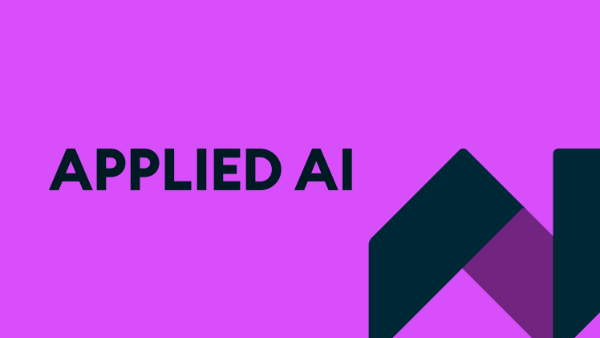How to Use Coaching to Sustainably Grow your Company

Workable Employees Working Together
This piece was originally published on The Leaderpath. Caterina Kostoula runs executive coaching, online courses, and books to grow your clarity and leadership.
In the scale-up stage, it is all about the people.
Nikos Moraitakis and Spyros Magiatis launched Workable in 2012. They were frustrated with the effort it took to recruit suitable candidates, and they decided to fix it. Six years and 50 million candidates later, Workable was already the leading hiring platform in the world. They had offices across three continents and hundreds of employees.
In November 2018, they raised an additional $50 million to make the company even better. A couple of months later, I received a call from the CEO Nikos Moraitakis. He wanted to discuss coaching.
“I care about my leaders,” he told me. “I want to support them in any way I can.
”
Moraitakis wanted his team to remain happy and fulfilled with their work as the company grew. He wanted them to expand their skills so that they could all get the company to the next level together. When one of his VPs asked for coaching support, he listened.
The challenge
Moraitakis believed in his team’s potential, and he wanted coaching to amplify it.
The company’s success led to exponential growth. Many Workable leaders moved from individual contributors to managers to VPs within a few short years. They had excellent technical expertise, and they now needed to build their confidence as leaders as well. Workable needed their people to grow faster than the company.
“The transition from a full-time software engineer to a manager of multiple teams was no easy task. People management is not another programming language. It requires a multitude of skills and techniques and, above all, time and effort,
” said one of the Workable VPs.
As the company grew, collaboration and communication across timezones became increasingly complex.
A recent re-org had brought a new structure in product and engineering, and the new leaders needed to gel as a high-performing team. Workable had huge ambitions, and they needed everyone to be rowing in the same direction.
The plan
We developed a 3-prong one-year coaching plan for 17 of the leaders of the company:
- Insight Collection. We collected insights with 360-degree feedback surveys for every leader. Their stakeholders provided feedback about the leaders’ strengths and opportunities for development. We had three-way conversations with their manager to align on coaching priorities. We conducted interviews to identify the key themes to work on at a team level.
- Executive Coaching. We matched every leader with their own external executive coach, someone they could confide in and trust. The coaches would not coach two leaders who had a reporting relationship to avoid conflict of interest. Each coachee had the ultimate say in their coaching agenda. The topics covered leadership skills, influencing peers, and strategy among others.
- Team Coaching. We had a quarterly 8-hour team coaching session with the newly formed product and engineering leadership team. We worked on the new team’s vision, purpose, culture, accountability, feedback, and roles and responsibilities. When Covid-19 hit, we moved the team coaching to the virtual space.
The results?
“The Leaderpath team really helped our executive team gain more confidence, understand each other, and work better as a team.” Nikos Moraitakis, CEO Workable
“Coaching helped me find my own executive voice and style. The results were impressive: my team members already commented on how more grounded and effective I am.” Zaharenia Atzitzikaki, VP Design Workable.
A year later, Workable leaders’ confidence and skill had increased, and it showed on their 360-degree feedback surveys.
The new product and engineering leadership team had established a strong collaborative ethos. They made high-stakes decisions even more effectively. You know you have a cohesive, high-performing team when they produce extraordinary results.
When COVID-19 hit, the Workable team quickly developed a new free product for their clients in under two weeks. It matched the thousands of laid-off employees around the world with employers who were still hiring. They were passionate about helping their customers and their communities deal with the crisis. The development of a product like that would take months under normal circumstances. The team was able to work together to produce something remarkable at breakneck speed.
How to use coaching to grow your company sustainably
If you would also like to use coaching while scaling your company here are some tips:
- Start small and expand later. Depending on your budget, you can start small. Begin with the coaching of the founders first, as it is an incredibly lonely job. Their psychology and leadership have a massive impact on the company’s performance. Continue with team coaching for your executive team. You will be impressed by the difference it will make to your bottom line. In continuation, you can provide coaching to key leaders and high potentials across the company.
- Collaborate with a trusted coaching partner. Look for coaching qualifications, either a postgraduate degree in coaching or an ICF or EMCC accreditation. Ask for a track record of success and an understanding of high-growth environments. Partner with someone who has the scale to provide a team of coaches. They will be doing the vetting for you, and you can have a selection of coaches to choose from. By collaborating with a company that has many coaches, you can also ask them to raise any anonymised systemic themes that come up in coaching to you. It can be useful to get a pulse of key issues across your organisation.
- Measure the results. Coaching is an investment of time and money, and you need to make sure it is working for you and your company. With Workable, we measured the results in three ways: coaching satisfaction surveys, key team-health metrics, and comparing the 360-degree feedback survey results from before and after the coaching. You can use additional metrics such as the results of your employee engagement survey, retention rates, and of course the company’s financial results.
- Create a coaching culture. Eventually, you will want to create a coaching culture across the company. Every manager and peer should be able to act as a coach when needed.
Final thoughts
“Strategy is 5 percent thinking, 95 percent execution. Strategy execution is 5 percent technical, 95 percent people-related.
”
Inthe startup phase of your business, it is all about finding a product-market fit. As you grow, your people, teams, leadership, and culture become increasingly important. The companies that fail to sustain their growth often do so due to people-related issues.
You do not have to tackle your people’s development alone. Successful scale-ups like Workable invest in coaching because it works. Coaching has a 700% ROI, higher than any other people-development activity. Maybe it could be the secret ingredient to propelling your company’s performance.
I will leave you with an old business joke:
CFO asks CEO: “What if we invest in our people and they leave?
CEO: What if we don’t invest in our people and they stay?”
This piece was originally published on The Leaderpath. Caterina Kostoula runs executive coaching, online courses, and books to grow your clarity and leadership.


